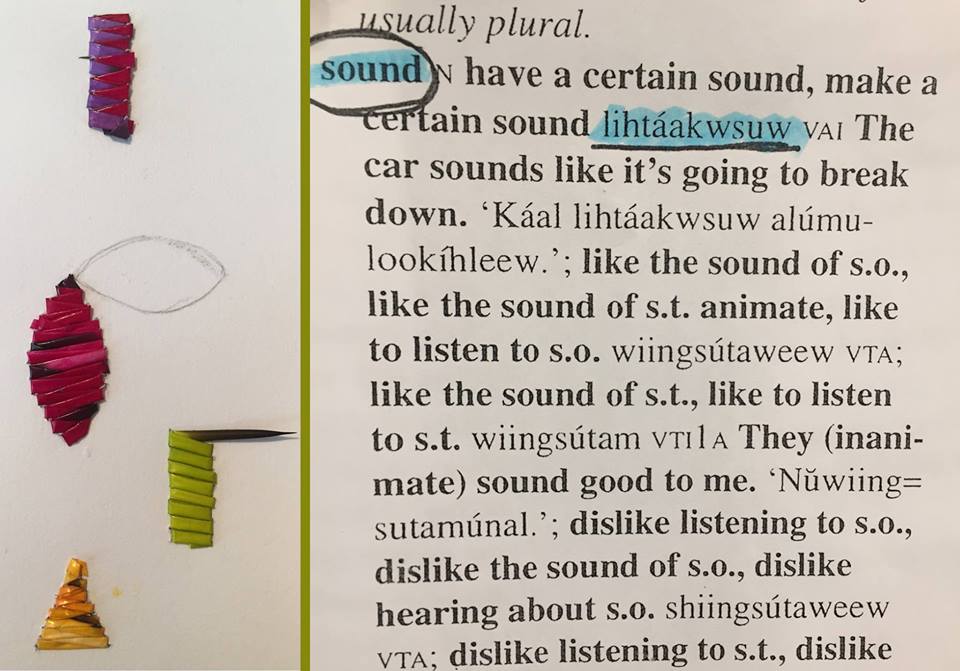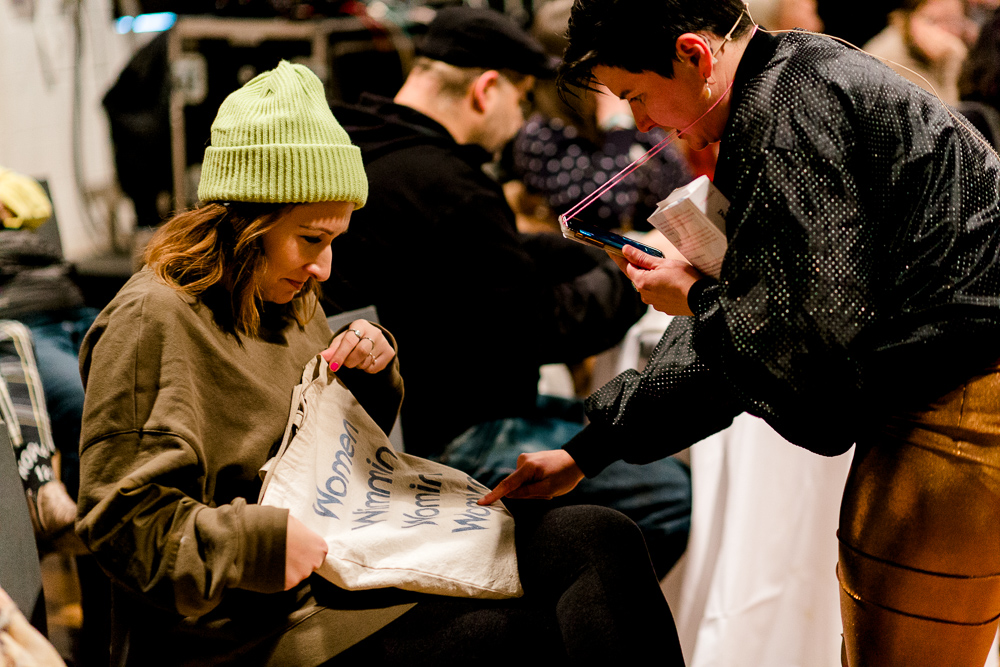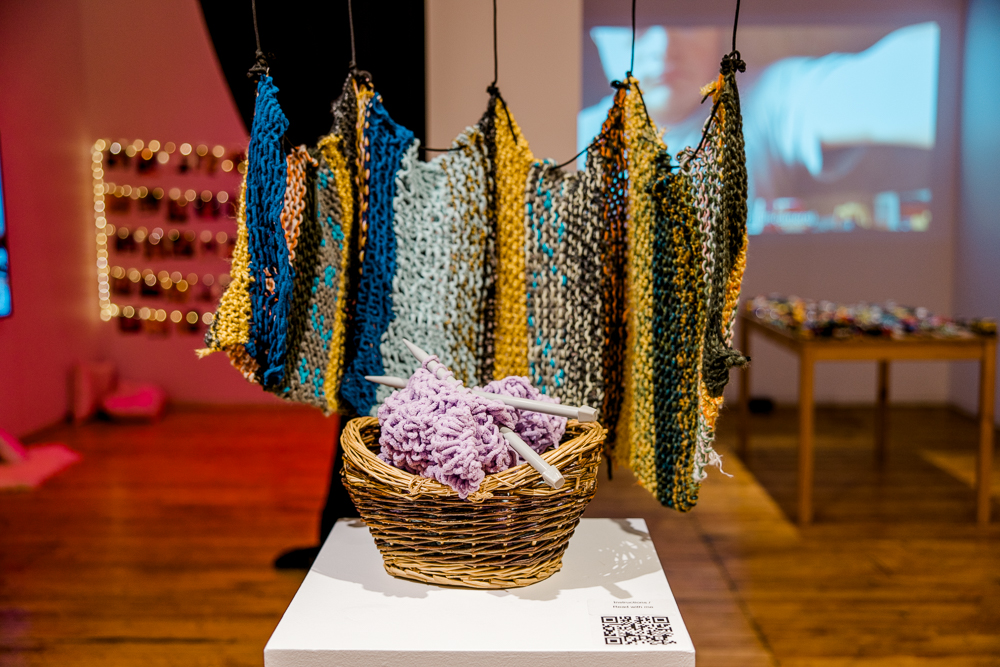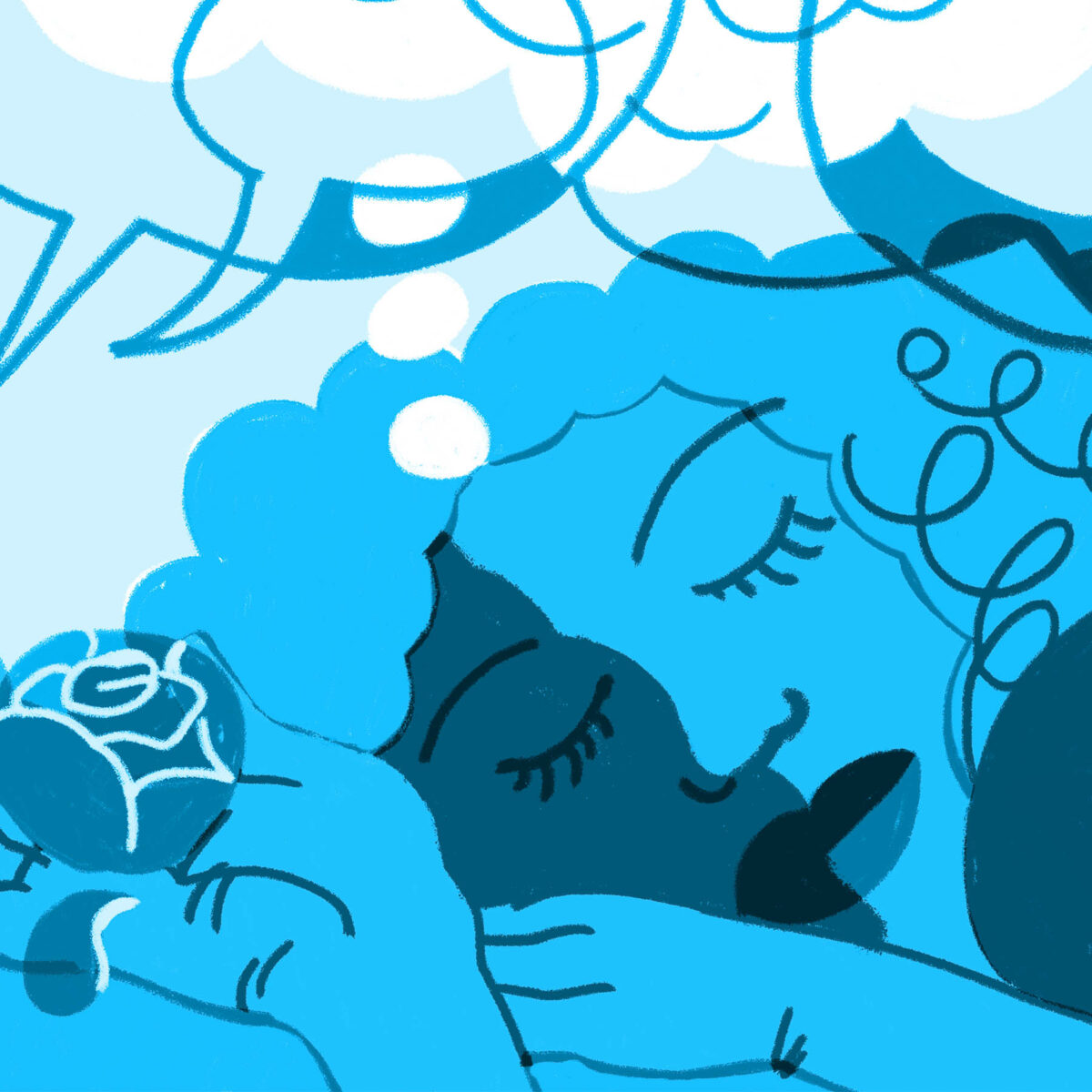Texts and activities for introductory engagement with feminism and Disability should establish clear connections between the aims of feminism and the aims of dismantling ableism. They should also reveal how systems of sexism and ableism interlock with racism and colonialism to create structural oppression. It is worthwhile to take time to reflect on these interconnecting systems with students.
Feminist Disability Arts
Recommended Readings
- CHAPTER: Hall, K. Q. (2011). Reimagining disability and gender through feminist disability studies: An introduction. In K. Q. Hall (Ed.), Feminist Disability Studies (pp. 1–10). Indiana University Press.
- CHAPTER: Kafer, A. (2013). Introduction: Imagined futures. Feminist, Queer, Crip (pp. 1–24). Indiana University Press.
- ARTICLE: Bailey, M. & Mobley, I. A. (2019). Work in the intersections: A Black feminist Disability framework. Gender & Society, 33(1), 19–40. https://doi.org/10.1177/0891243218801523
Kim Q. Hall’s introduction to Feminist Disability Studies, and Alison Kafer’s introduction to Feminist, Queer, Crip bring forward the complexities of the relationship between gender and feminist studies, and critical Disability studies. In their article, “Work in The Intersections: A Black Feminist Disability Framework,” Moya Bailey and Izetta Autumn Mobley offer a concrete theoretical grounding in critical Disability studies and Black feminist theory, through an intersectional lens.
Activity: Identifying Key Passages
Ask each reader to identify a key passage from the three texts discussed above that has allowed them to come into understanding. Encourage them to share their selected passage with the group and explain how it was helpful for them. This is a great way to co-create understanding of the texts.
Video: The Red Rose Bleed by Gaitrie Persaud
The Red Rose Bleed is a performance piece by Deaf, Brown, queer artist Gaitrie Persaud. The piece animates feminist Disability studies in its foregrounding of the agency of a Deaf, Brown woman. It offers new perspectives on an experience that might otherwise be presented in line with dominant sexist, racist, and ableist assumptions and stereotypes (Bailey & Mobley, 2019, p. 24).
In the performance, Persaud portrays Enchanté, a powerful Deaf woman who has a secret known only to her bodyguards: She has a bad habit of killing men who are up to no good. As Persaud writes, “Enchanté is a very talented killer, mercurial in mood. She clings to the luxuries of her life. Enchanté will draw you into her luxury life… with her Red Rose.”
The monologue reveals that Enchanté kills violent men as a means of avenging her own sexual assault as a young teenager. In the piece, Enchante addresses the camera as a confessional, revealing how she responds to her situation, her desire to subvert the expectations placed upon her, and the means she found to take control of her life. She uses American Sign Language to communicate, with an interpreter voicing her signs for hearing audience members, but Deafness is not the primary focus of the piece.
Reflection Question
- What assumptions about racialized, Deaf sexual assault survivors are challenged by Persaud’s performance as Enchanté?
Explore Further: Deaf Arts in Canada
- ARTICLE: Pottle, A. (2020, April 6). Canada is failing its deaf artists. This Magazine. https://this.org/2020/04/06/canada-is-failing-its-deaf-artists/
- ARTICLE: McAskill, A., Desloges, C., & Bacchus, N. C. (2022). Interview with Natasha Bacchus, a.k.a. Courage. Canadian Theatre Review, 190, 50–52. https://doi.org/10.3138/ctr.190.011
- ARTWORK: Gooden, E. R. (2020). Know her worth series. Deaf Interiors. https://deafinteriors.ca/artist/ebony-gooden/
- In this piece for the Deaf Interiors project, Ebony Gooden animates intersectionality, writing, “Being a Black person is tough. Being a Deaf person is tough. Being a woman is tough. Combine all of these identities and one would believe that to be a Black Deaf woman means they face three different types of discrimination. However, it doesn’t mean a Black Deaf woman isn’t magical.”
Activist Art, Disability, and Decolonization
Recommended Readings
- ARTICLE: Dion Fletcher, V., & Ferguson, M. (2021). Finding language: A word scavenger hunt (Dispatch). Studies in Social Justice, 15(2), 180–183. https://doi.org/10.26522/ssj.v15i2.2663
- ARTICLE: Rice, C., Chandler, E., & Dion, S. (2021). Decolonizing disability through activist art. Disability Studies Quarterly, 41(2). https://doi.org/10.18061/dsq.v41i2.7130
Finding Language
Activist art aims to dismantle oppressive structures and systems. Disabled Lenape and Potawatomi artist Vanessa Dion Fletcher’s piece Finding Language exemplifies art as activism.


In their article Decolonizing Disability Through Activist Art, Carla Rice, Susan Dion, and Eliza Chandler (2021) discuss how Finding Language explores the connections between settler-colonialism and disability.
Finding Language animates Dion Fletcher’s multi-layered relationship with spoken and written languages as a Potawatomi-Lenape artist who is seeking out her traditional and sleeping Lenape language (called “Delaware” by colonizers), and as someone who identifies as learning disabled. […]
Her work prompts us to consider, in a way that only art can do, that the stuck-ness of words in her head and words on her ancestor’s tongues as being part of the same process. Colonialism has disappeared Lenape, an oral language, Dion Fletcher’s Indigenous language, and in the wake of this disappearance, and in line with colonial rule, English, a written language, rose as the dominant language. Finding Language addresses the ways that she has lost her language through the imposition of settler-colonialism and struggles to orient to the language of settler-colonialism, a written language, because of the ways she delivers and receives language.
Activity
In small groups or on their own, have students read and reflect on the article: Dion Fletcher, V., & Ferguson, M. (2021). Finding language: A word scavenger hunt (Dispatch). Studies in Social Justice, 15(2), 180–183.
Individual Reflection Questions
- How does Dion Fletcher consider touch in relation to her piece Finding Language?
- What are the layers of how words, language, meaning, and access function in this performance?
- Can this performance be understood as a feminist activation? How/why?
Group Reflection Topics
Returning to the larger group, engage the students in a discussion on the following topics:
- Multiple modes of understanding
- Receiving knowledge
- Access to knowledge and the contextual factors that complicate access to knowledge
Disability Arts Methods as Feminist Practice
Disability arts methods facilitate access to increase ease of engagement for all audience members. Access practices include ensuring physical and informational accessibility, providing sign language interpretation, captioning, and audio description, engaging with Relaxed Performance, active listening, and many more. Students can learn more about access in the arts through Bodies in Translation’s Vital Practices in the Arts document, which is a living “resource guide for documenting, producing, and sharing arts and knowledge in ways that are accessible, collaborative, and disruptive.”
Maddy and the Invisible Band of Groovers
Access practices are foregrounded in productions of Blind artist Alex Bulmer’s play Maddy and the Invisible Band of Groovers. Before the performance, young Blind people are invited into the space to create props to be used during the show, and to become familiar with the space. When the props are used during the performance, access intimacy is born between performance and audience. Incorporating and embedding the audience into the creation of the performance, facilitates ways for connection that go beyond the experience of watching a play.
#CripRitual Project
A feminist Disability studies approach to art integrates access to knowledge into the artistic piece. As an example, introduce your students to the feminist Disability arts project #CripRitual. The project invites Disabled, Deaf, Mad, Neurodivergent, and Different artists to reflect on the ways they normalize, celebrate, and repeat their own Crip Rituals. The practice of Crip Rituals creates unapologetic spaces of and for difference.

Activity: #CripRitual Think Pair Share
- On your own, explore the main page of the #CripRitual website. Identify:
- Three things related to accessibility
- Two things related to “crip”
- One question you have about #CripRitual
- With a peer, choose one piece from the #CripRitual exhibition and identify:
- Any Disability elements
- Any feminist elements
- Discuss how rituals frame our daily life
Reflection Questions
- In what ways does Disability art invite viewers/experiencers into their art?
- Why is it important to invite in the viewer/experiencer when it comes to Disability art? Why is it important to do this for art in general?
- How do you define “equity”? How does the idea of equity function within Disability art spaces and practices?
- How can gender analysis open up new pathways for Disability? How can Disability analysis open up new pathways for gender?
- Considering feminist positionality politics where someone discloses their identity positions to inform the biases and ways they analyze the work, could disclosing Disability/non-Disability also serve as a way to frame perspectives and biases?
- What does feminism mean to you?
- How do you define Disability? What kinds of resources have given you a better understanding of Disability?
Explore Further: Disability Arts Methods as Feminist Practice
- BOOK: Kafer, A. (2013). Feminist, Queer, Crip. Indiana University Press.
- ARTICLE: Rice, C., Harrison, E., & Friedman, M. (2019). Doing justice to intersectionality in research. Cultural Studies, Critical Methodologies, 19(6), 409–420. https://doi.org/10.1177/1532708619829779 (open access copy)
- ARTICLE: Springgay, S. (2021). Stitching language: Sounding voice in the art practice of Vanessa Dion Fletcher. Studies in Social Justice, 15(2), 265–281. https://doi.org/10.26522/ssj.v15i2.2431
- RESOURCE: Ware, S. M. (2018, September 5). Black Lives Matter Toronto founding member talks about his complex identity. British Council. https://www.britishcouncil.org/voices-magazine/syrus-marcus-ware-identity-activism
A detail from a larger illustration by Josephine Guan, focusing on a dreaming woman with curly hair, a rose resting in the palm of her hand. This version of the image is in shades of light and dark blue.






